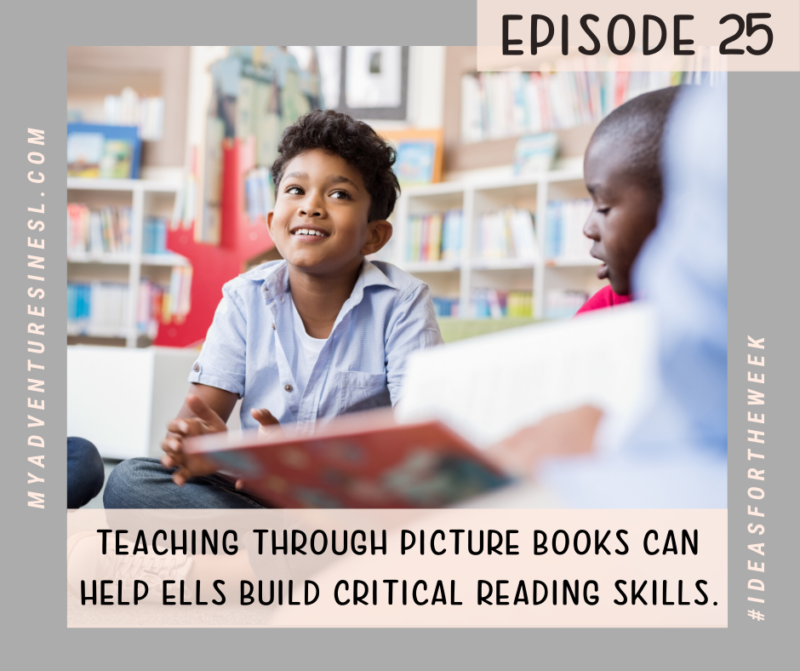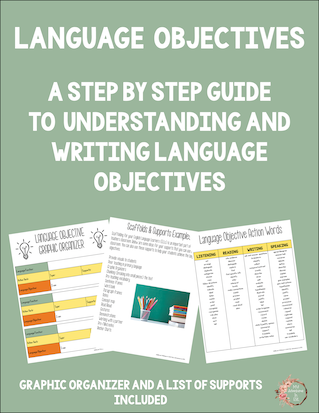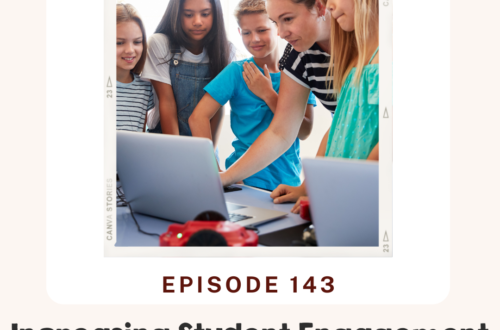
Supporting ELLs in Math
Something magical happened at my school three years ago that opened my eyes to one of the true needs of English Language Learners. Our school piloted a program that was completely unheard of in our school district. I had the honor of being a part of this life changing experience. We took part in the first newcomer program.
During the day 50 newcomers in grades 6-8 we a part of sheltered instruction. In our school setting, newcomers had a science, social studies, and an ESL class from an ESL teacher. Math was taught to by grade level math teachers, who had an interest and desire of supporting English Language Learners. During this time I was working with the math teachers I learned some valuable tips that I would like to share with you. There is also a free cheat sheet that goes along with this episode which I will link in the show notes.
Use visuals and manipulatives as much as possible with your ELLs in math.
Math is a visual subject. I think of formulas and equations when I see visuals. You can use visuals such as diagrams and processes for your ELLs. For example, if a student is learning the process of rounding, create a visual step-by-step process to support the students in this task. In some cases we had students with interrupted education who were learning numbers. The students used visuals to assist in learning how to count. Manipulatives are visual and also increase engagement in the math class. They provide a hands on way to support your ELLs in math.
Introduce and pre-teach key vocabulary to students before introducing word problems and new concepts.
- Just because it is math doesn’t mean that academic vocabulary should not be a focus of the lessons.
- Just as you would teach key vocabulary in ELA classes. It is important to teach vocabulary in math classes.
- Students are going to encounter word problems and new math concepts. Teaching them key vocabulary is going to help them with they encounter these concepts and word problems.
- Teachers can use the Frayer Model for teaching key math concepts. The great thing about the Frayer Model is that it allows for you to include visuals for the students. These visuals can be a sample word problem, equation, or a formula.
Math video tutorials are powerful!
Think about when you want to learn something new, you might just go to YouTube and click on a topic. There are so many tutorials that provide students with step-by-step instructions on how to learn math concepts. I used them all the time when I was teaching myself and the students a new math concept. The one that is highly recommended is Khan Academy. What makes Kahn Academy a beneficial tool is that it FREE and it aligns directly with the math Common Core Standards. So if whatever math concepts your students are learning there is a high chance there is a step-by-step video on Khan Academy.
Math Interactive Notebooks
I had the pleasure of working with a phenomenal math teacher Mrs. Francesca Hall who is an advocate for English Language Learners. In her classroom she used math interactive notebooks. In the notebooks there was basic numbers, formulas, and tips. Whatever the student was going to learn for that lesson was put into a notebook. It proved to be a valuable resource that the students used throughout their year in math.In these notebooks you can also have the students record examples that include a step-by-step process for completing a problem. This will allow the students to return the notebook if they need help working a problem. In the interactive notebook you can also keep track of those key words that was mentioned above.
Click on the photo above to get your FREE math strategies!



